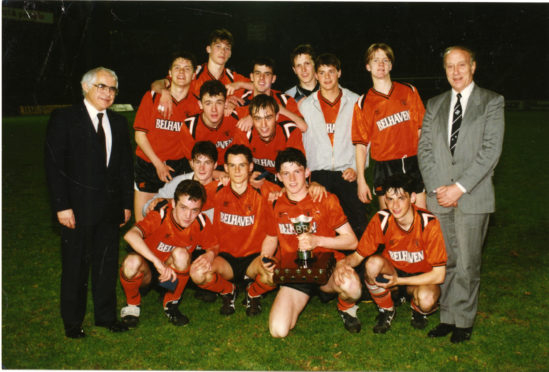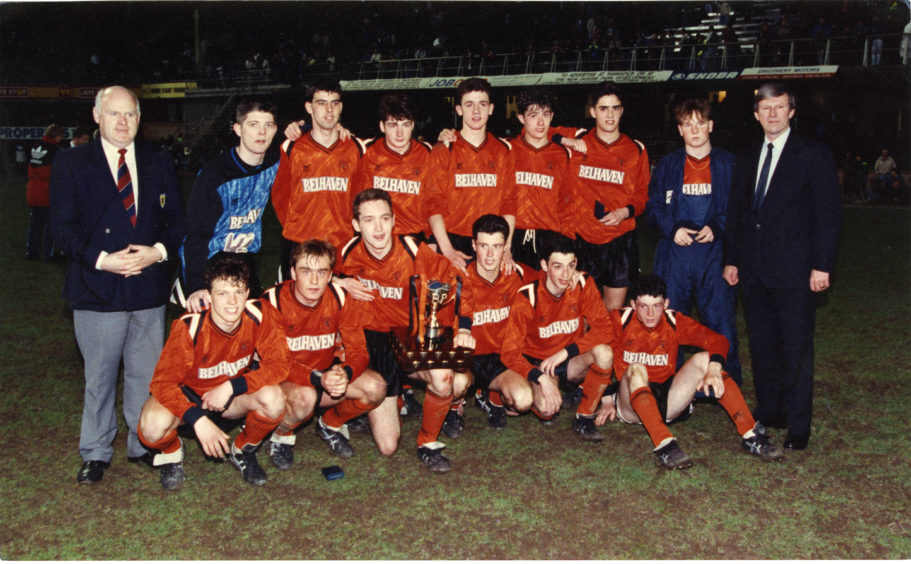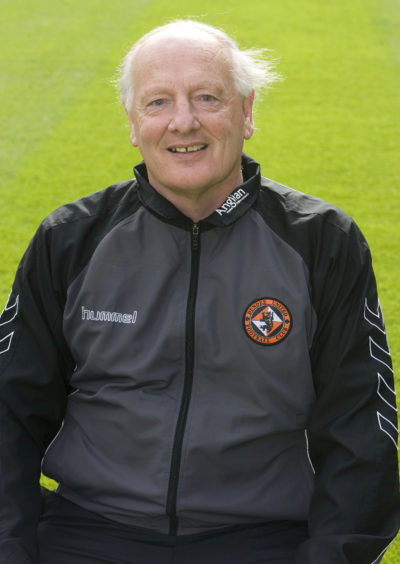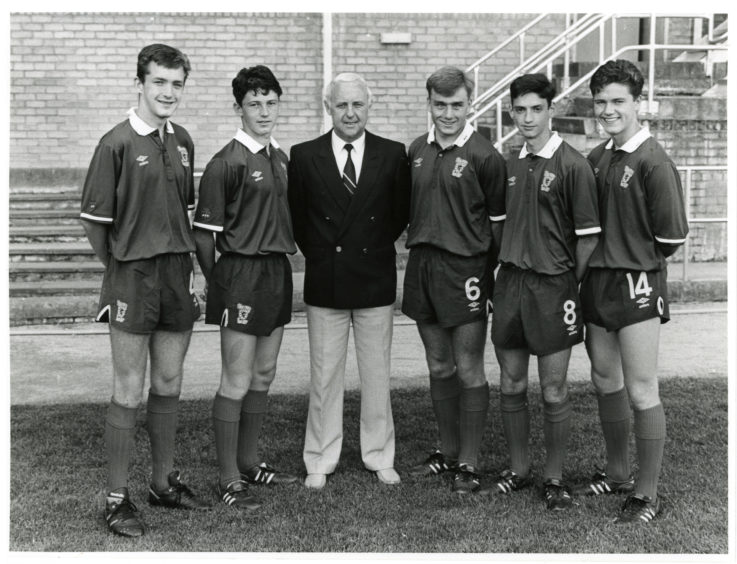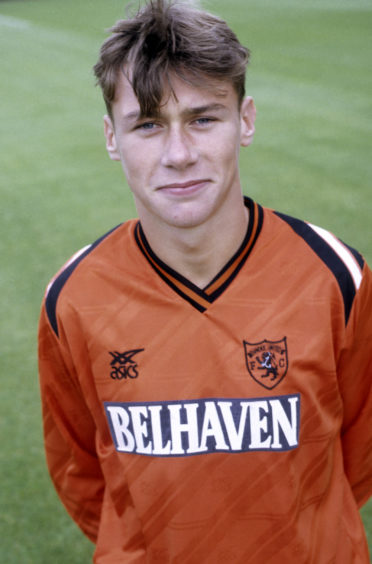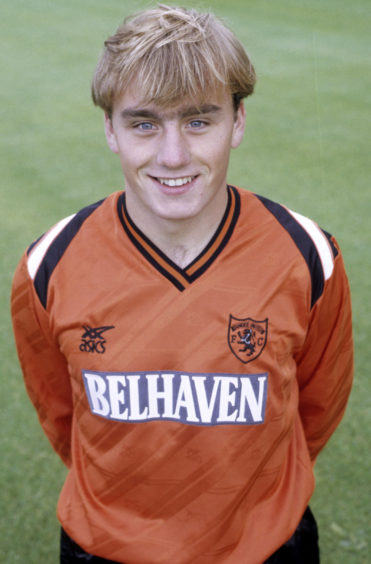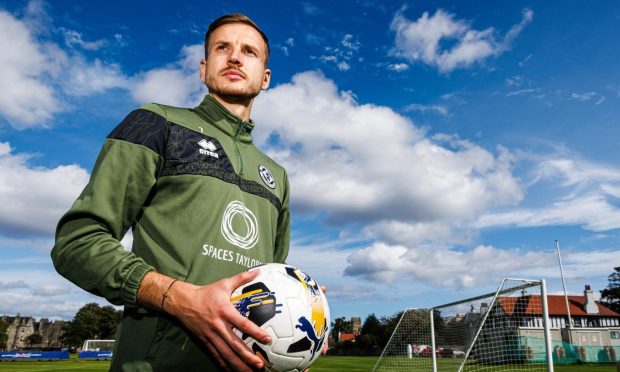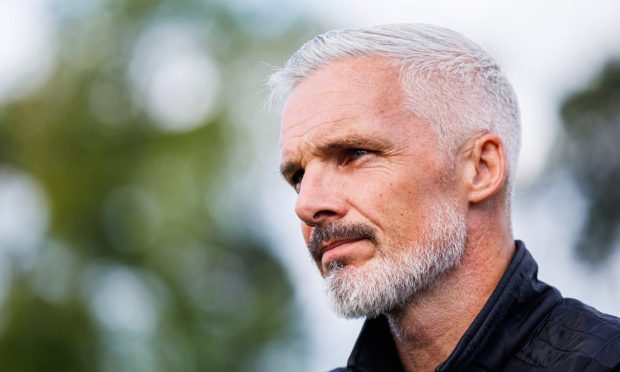“I am delighted in the immediate sense but I also confess that I am fed up waiting for some of them to perform in the first team to the standard they have undoubtedly attained at lower levels!”
Jim McLean speaking to the Evening Telegraph in the wake of the club’s maiden BP Scottish Youth Cup win, 30 years ago this week.
The team from 1990 McLean was critiquing starred Christian Dailly, Duncan Ferguson, Andy McLaren and Gary Bollan.
The legendary United boss saw their talents and knew he could go in heavy on them. For those in possession of less star quality, it was a desire to be proven wrong that motivated McLean’s strong words.
His vexing of them was perhaps born from having watched them lose in the final of the same tournament to Celtic the year before, in 1989.
Paul Sturrock’s young side would win through in the new decade, however, and even repeated the feat in 1991. Despite what McLean’s comments may indicate, that was much to his delight.
The Class of 1990 were Stuart Garden, Tom McMillan, Eddie Conville, Pat Clark, Stephen McInulty, McLaren, John Lindsay, Gary Mearns, Bollan, Ferguson, Dailly, Gordon Parks and Grant Johnson.
They were a talented bunch, each with a different, more interesting story to tell than the last, and all of them were, at that time, in McLean’s thoughts and plans.
Ferguson, Garden, McMillan, Mearns and McInulty would miss out on repeat Youth Cup glory in 1991 but David Hannah, Gary Arbuckle, Graeme McCheyne, Peter Prior and Gregor Benvie stepped in to form another winning team.
Hibs were their victims in both finals – first a 4-2 win on penalties after a stalemate at Easter Road, with Bollan, Clark, Dailly and Johnson netting from the spot. A 2-0 victory at Tannadice followed in 1991 thanks to goals from Lindsay and Bollan.
Of McLean’s Babes, Dailly, McLaren, Bollan and Hannah were all part of one of United’s greatest-ever days – their first Scottish Cup win, clinched thanks to a 1-0 defeat of Rangers at Hampden on May 21, 1994.
The careers enjoyed by the stars of his young side speak for themselves, but the truth is that wee Jim believed in each of that crop.
The frustration felt in his words at the beginning of this piece was not just with hot prospects like Dailly or Bollan but also the likes of injury-stricken right-back, McMillan, and talented midfielder, Lindsay.
They may not have ‘made it’ in the game or enjoyed the fame of a ‘Christian’ or a ‘Big Dunc’ but theirs were careers and lives which found success elsewhere – in part down to McLean’s ethos.
The Tangerines’ 1983 league-winning manager was ahead of the curve in many ways, not least in terms of youth development and creating a pathway into the top team.
He employed Kenny Cameron to scour the east coast for the best young talent and Graeme Liveston similarly in the west. The latter enjoyed 25 years with the Terrors from 1984 to 2009 and he remembers the Class of 90 as the best he worked with.
“It definitely was,” the 72-year-old asserts.
“At that time, the main clubs for developing players and getting them through to that level were Dundee United and Aberdeen, not Rangers and Celtic.
“We were miles ahead of them, just like the first teams were in the 1980s.
“In terms of youth development we were the best and I was competing with Aberdeen for players in the west of Scotland.
“We had a good reputation and always got loads of players to come up. Kenny Cameron always made sure we got the best players from the Dundee area like Gary Bollan and John Lindsay.
“We had to compete to get players in the west like Andy McLaren and Tom McMillan. Big Dunc and Christian Dailly were pretty much straight into Jim’s first team. It was like a conveyor belt.
“Christian was excellent but Gary was a top player, too, and he and Andy quickly followed him into the first team at a very young age.They all played quite a lot of games and were very well thought of players at that time.
“Grant Johnson, too. That shows the level of our team that we had him on the bench for the 1990 final.”
In fact, Liveston believes McLean’s reach wasn’t limited to Dundee United and he may have had unknowing input into the more famous Manchester United Class of 92.
The likes of David Beckham, Gary Neville, Ryan Giggs and Paul Scholes, bred by former Dons boss Sir Alex Ferguson, became European champions and even had a hit documentary made about them.
That’s a far cry from the trajectory of McLean’s kids, but some parallels between the two bosses’ approaches are clear.
“Jim and Fergie were ahead of the curve. They knew they needed to get young players into the first team,” Liveston continued.
“They were the first ones to really do it. The credit goes to Jim for our success, there’s no question about that.
“Walter Smith, who was the assistant for some of his time, was very much involved in some young talent being developed, too. Wee Jim was the man, though. If he wasn’t there we wouldn’t have been in that situation.
“You look at Fergie’s famous Class of 92 at Manchester United. He applied the same principles down there.
“He realised, just like wee Jim did, that getting young players into your team was the way forward. Apparently when they went on their first coaching course at Largs together, Jim and Fergie shared a room.
“They were great pals and rivals, too, and I think part of that was down to having similar views on developing talent.
“Who knows what was said or went on in those two weeks but there was a great mutual respect there, for sure.”
Despite Dailly going on to star for West Ham and win 67 Scotland caps and Ferguson achieving legend status at Everton, Liveston fondly remembers right-back ‘Tommy’ McMillan.
McMillan, alongside Bollan, McLaren, Conville and Lindsay, were selected for Scotland’s 1989 U/16 World Cup squad who, led by Craig Brown, lost the final to an infamous Saudi Arabia ‘youth’ side in front of 50,000 at Hampden.
Lindsay, who later went on to Arbroath, would score twice in that tournament but it was always McMillan who stood out for Liveston.
“Tommy was definitely one of the best but it was an injury which did him in,” he added.
“He, like most of them, went full-time but got a bad knee injury. He was one of my boys, from Falkirk. In fact, he comes from California, a village outside Falkirk.
“That one always looked good on the teamsheet but California was just a wee mining village!
“He would’ve made it but was just so unfortunate. You sign a lot of players so for them to even get to that level was good, even with wee Jim in charge.
“He was good at promoting players. There was no doubt about that, some managers were different, but for Jim it didn’t matter what age they were.
“Players, eventually, reach the level they can play at. They may be brilliant at 18 but they’re not good enough to play in your first team or good Premiership players but can’t make it for Scotland.
“There’s always a limit, a point where players can’t get beyond.
“Gary Mearns was a Dundee boy, didn’t maybe ‘make it’ but had a good career at Forfar and Brechin.
“Stephen McInulty had a great junior career for a long time at a good level, it wasn’t Mickey Mouse level these boys ended up at.
“In fact, when I was at Alloa’s academy, Tommy’s nephew was there and Tam used to bring him along. He’s a millionaire now, apparently! That’s what people say. Catering has been good to him then!”
Bollan, now manager at Cowdenebath, fondly recalls his youth days at United and the obvious quality of Dailly, Ferguson et al.
However, he believes businessman, McMillan, sports writer, Parks, and NHS front-line worker, Conville, prove their side went on to be special off the pitch, too.
“Duncan and Christian ended up down south of course but David Hannah and Andy McLaren were magnificent,” the 47-year-old former defender said.
“Big Dunc didn’t feature as much before the Youth Cup but managed to go on and flourish in his later teens.
“That was about the time when Dunc was making his mark which goes to show you can develop at a later stage.
“There were a few others in there who went on to do good things as well like Grant Johnson. It was a great youth set-up with some real good players coming through at that time.
“There were other youth internationalists at the time like Tommy, Eddie and John who were all at the U/16 World Cup in 1989 with Andy and I.
“Those guys had real bad injuries at an early age but have all gone on to do well in what they’re doing. Tommy runs his own business and Eddie is working on the frontline with the NHS at the minute.
“Our paths still cross and most of us still speak to each other. Parksy still speaks nonsense!
“At that time we had a real good team split between two age groups. We were going anywhere and winning everything that was on the go.
“I can recall going across to Ireland and winning the Milk Cup in 1986, we won Celtic’s centenary tournament in 1988 and we moved on to win the Youth Cup two years on the trot.
“It was virtually the same lads moving through the whole system at the time, which was unbelievable for us.
“Other clubs used to fear us, every tournament we entered we won. For Dundee United at that time it was a real achievement and a triumph to get to three finals on the trot.”
Bollan was an unused sub in the 1994 Scottish Cup Final and spoke of his pride at seeing so many youth products involved in their success, particularly after the pain of many defeats as a fan.
“To a certain extent, what we did laid the foundations for that. About half of that team had a role to play in the lead up to the final, with some playing in the game and others not,” he commented.
“We had to look after ourselves. Rangers were enormous favourites going into that day, they were going for the treble, but we managed to win the cup for the first time in the club’s history.
“That was another great achievement for Dundee United.
“I have many memories as a kid coming home from Hampden with tears running down my face so it was good to be on the other side of that.
“I was at all the League Cup Finals. The only one I wasn’t at was 1991 when we lost Motherwell, I was at a tournament in Holland at the time. We actually won, beating Slovan Bratislava in the final.
“But growing up as a United fan and standing on the terraces, week-in, week-out to then come through the youth ranks like we did, it was great.”
Liveston echoes Bollan’s thoughts, believing McLean’s foresight with young players made their Hampden day in the sun possible.
“I sometimes forget big Dunc was on the other side that day,” he recalled.
“It was some turnaround for the young players to go from team-mates to playing each other in a big game.
“That youth team played a big part in United winning that day, a Scottish Cup for the first time.
“It’s not the whole story, of course, because there were other players who’d come in and they’d made decent signings.
“But, yes, I think if wee Jim’s youth set-up hadn’t have been there, we wouldn’t have won the cup.
“Similarly, if we’d relied on the players that were brought in we wouldn’t have won it either. It had to be an amalgamation of the best of what we had.”
That until-then-elusive Scottish Cup success will have pleased McLean, by that point retired, as Ivan Golac lapped up the praise in the dugout.
Although, would the legendary United gaffer have preferred Ferguson, who appeared off the bench for Rangers that day, to score United’s winner rather than Craig Brewster?
Would McLean have liked 1990 shootout hero and current United academy coach Garden between the sticks rather than Guido Van De Kamp, or Conville in place of Gordan Petric?
It is hard to say.
Some did it on the pitch, others off it, but Dundee United’s now-famous Class of 1990 would go on to prove the great Jim McLean both wrong and right at the same time.
In a strange way, perhaps that is what he wanted all along.
